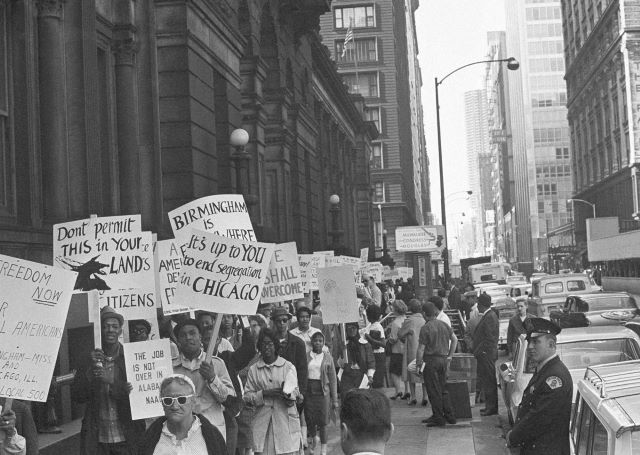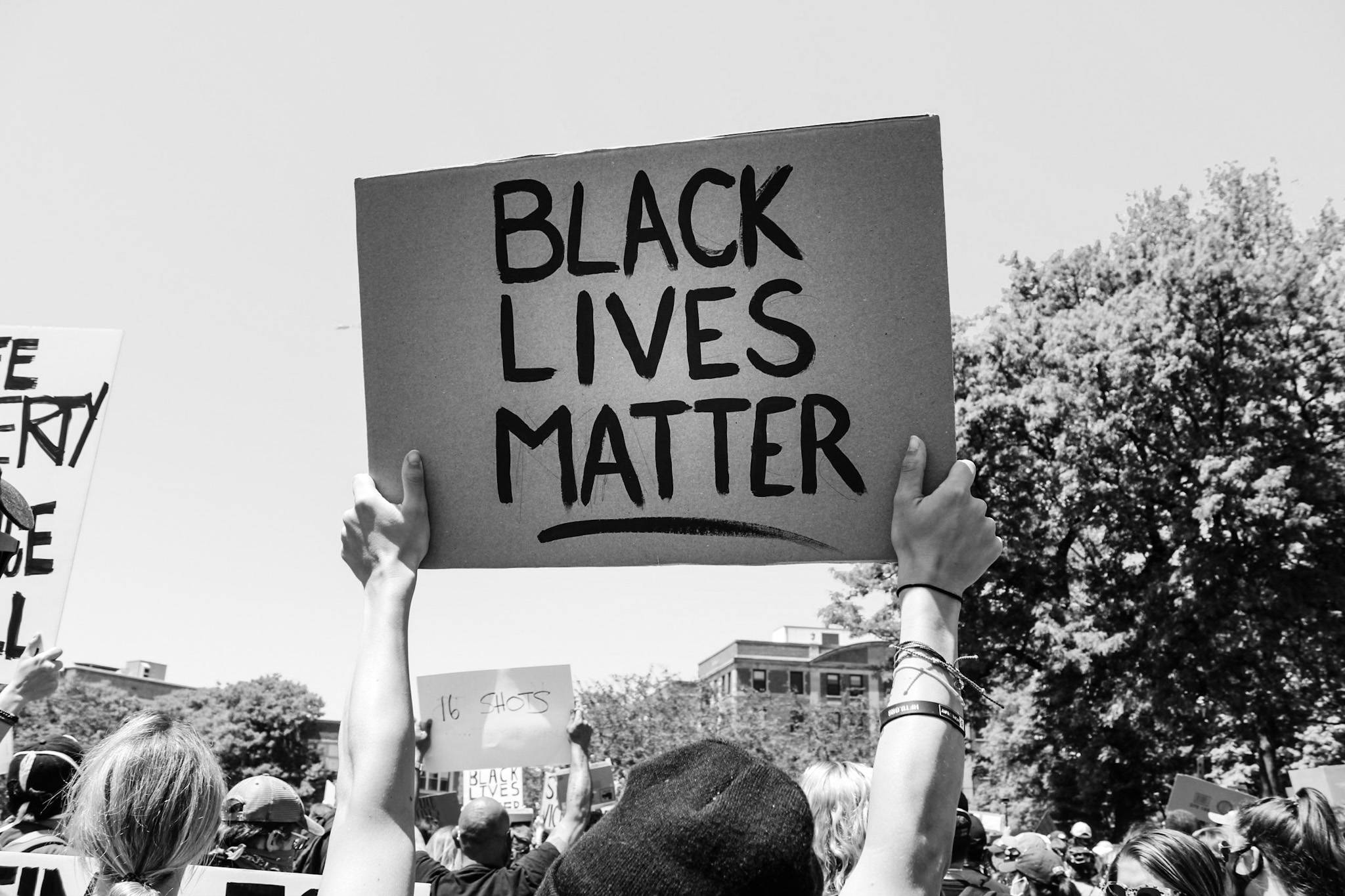Tens of thousands of people in Chicago have not slowed in marching for over a month to fight for racial justice, oppose police brutality, and protest the tragic murders of Black Americans at the hands of police.
As I joined demonstrations across the city—miles-long marches that passed by several green spaces—something became clear: Chicago’s public lands and parks have been transformed into militarized zones. The community parks that our neighbors work diligently to clean and protect are now guarded by tanks and police clad in riot gear.
Our city is not alone. In DC, pictures of military police lining stairs at the Lincoln Memorial evoked dictatorship, not democracy, and many of us watched in horror as park police teargassed peaceful protestors in Lafayette Square on live TV.
Yet the unwelcoming, racially-motivated “stay out” practices are nothing new for many people of color—especially the Black community—when it comes to the American outdoors. While images fill the news showing military police blocking access to public spaces, we must recognize that this “policing” and intimidation is a common experience for people who do not have white skin.
The history of parks and public lands is largely anti-Black, discriminatory, and disturbing. The creation of many of these places caused the forced displacement of Native Nations, which we have failed to reconcile centuries later.
Parks have been plagued by acts of violence against Black visitors—like Chicagoan Eugene Williams, who was murdered on a segregated Lake Michigan beach. Segregation policies and practices continued for decades in places of recreation. Today, racial profiling still threatens Black visitors—like Christian Cooper, who was birdwatching in Central Park when a white woman threatened him with police violence.
Chicago’s city parks once served as an escape for Black families fleeing Jim Crow racism in the South. But those same places are still a reminder of the systemic under-resourcing that exists in our city today. In 2018, Friends of the Parks published a report revealing the park district’s favoring of white, wealthy neighborhoods—made clear by data showing more capital investment, resources, and programming in those places.

A Chicago protest against segregation. Photo by: City of Chicago.
And while diversity is increasing in the outdoors, as of 2019, Black Americans were still some of the least likely to visit federal lands like national wilderness, parks, and forests. Experts say that's largely due to the anti-Black history of parks and public spaces in this country. In the 1950s, white people saw the creation of parks as an "escape from urban sprawl, at a time when urban was shorthand for blacks and immigrants," reported Latria Graham in Outside magazine.
Many national parks restricted Black visitors from picnic areas, bathrooms, and other "white-only" spaces for years. And that legacy has a long afterlife: A 2011 National Parks Service survey found that three times as many Black respondents as whites expressed that they felt too unsafe and unwelcome to visit national parks.
As a person who grew up in predominantly white classrooms, I learned less than half of the story of the conservation movement. Early conservationists like John Muir, who I was taught were “heroes,” also held deeply racist beliefs—ideas that created the foundation of today’s exclusionary outdoor spaces.
We cannot solve the exclusion, discrimination, and racism that have long existed on public lands if we do not change the system that upholds them. Armed forces, excessive police presence, and a culture of whiteness in outdoor spaces must be confronted and dismantled. In the fight for racial justice, I continue to hear one critical piece of advice from movement leaders: Take a step back and listen. For the Sierra Club’s Our Wild America campaign, that means centering communities who have long faced exclusion in outdoor spaces, and following their lead on what environmental protection looks like in their own communities.
This work is already happening in many places. In Detroit, a collective of groups including the Sierra Club formed “Detroit Outdoors” to expand urban parks that have been long neglected by the government, provide free recreation equipment, and create spaces for the city’s youth and families. The Sierra Club’s Outdoors for All campaign is committed to advancing equity and inclusion in the outdoors, which requires working to dismantle everyday racism in these spaces.
Even with changes happening on the community level, racially motivated exclusion on public lands has not ended, it’s just taken on new forms. In Nevada, the Air Force is pushing to expand bombing ranges in the Desert National Wildlife Refuge—a site sacred to Tribal Nations. Along the US-Mexico border, the Trump administration is transferring public lands to Customs and Border Protection for wall construction—destroying parks and taking lands for an outright racist agenda. Parks in the Southwest are even being used as spaces for Immigration and Customs Enforcement agents to issue unlawful immigration checks while people enjoy time outdoors. In Georgia, Ahmaud Arbery was simply running outside when he was murdered by three men because of the color of his skin. We must acknowledge white supremacy, inequity, and violence in the outdoors, and advocate for policies that center racial justice.
Let’s support the organizations who work to center the lived experiences of Black people in the outdoors and break down barriers—like Outdoor Afro and Melanin Base Camp. It’s critical we also confront our history and biases in the conservation movement, and support more resources, less policing, and anti-racism that can make our places of recreation ones that welcome everyone.
Soon, the military police will be called off, parks will reopen and Chicagoans will begin frequenting public spaces once again. Still, I hope the jarring images of police intimidation during protests lead to a longer conversation—one where we begin to correct the discrimination Black people face on public lands.
